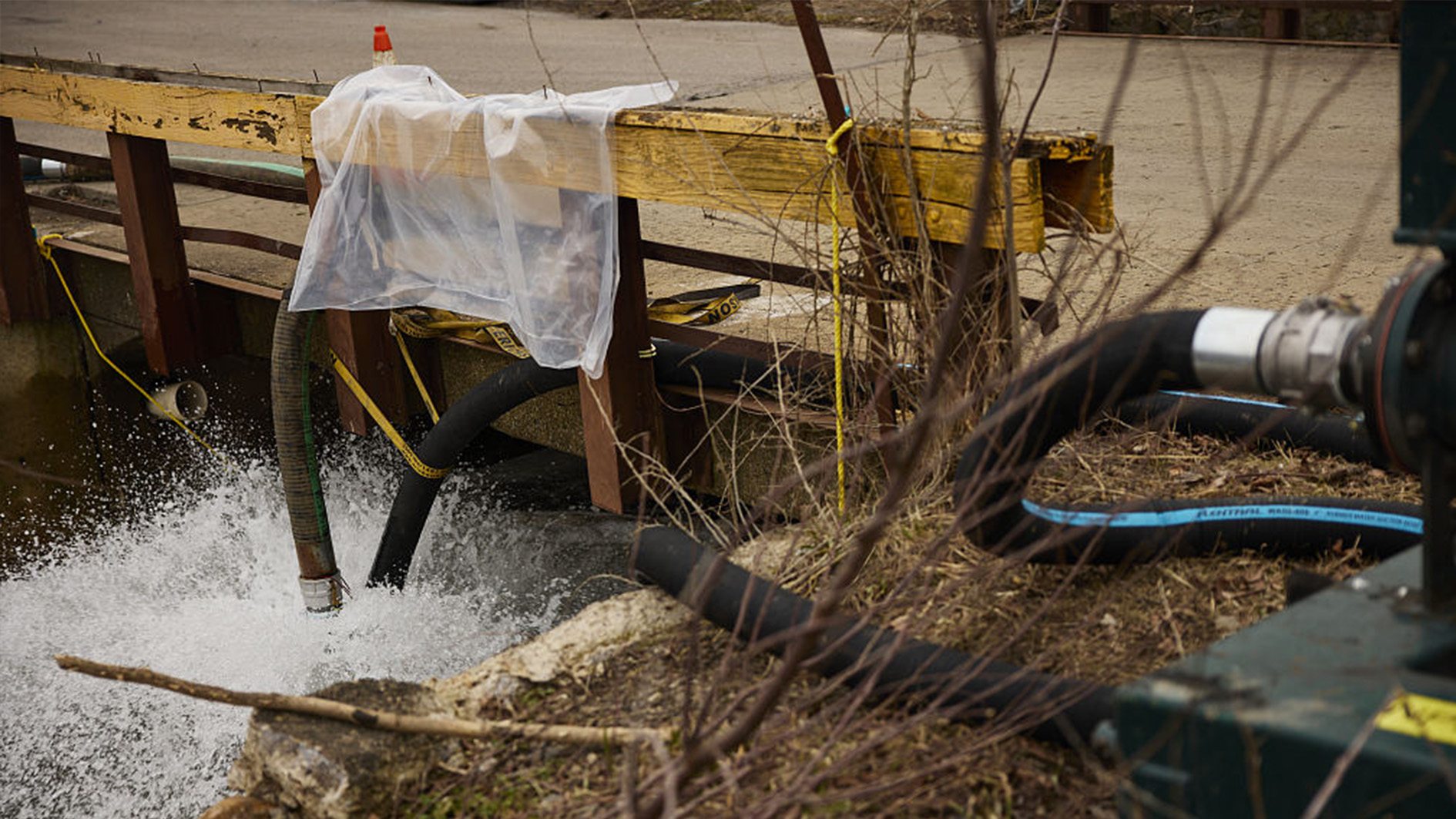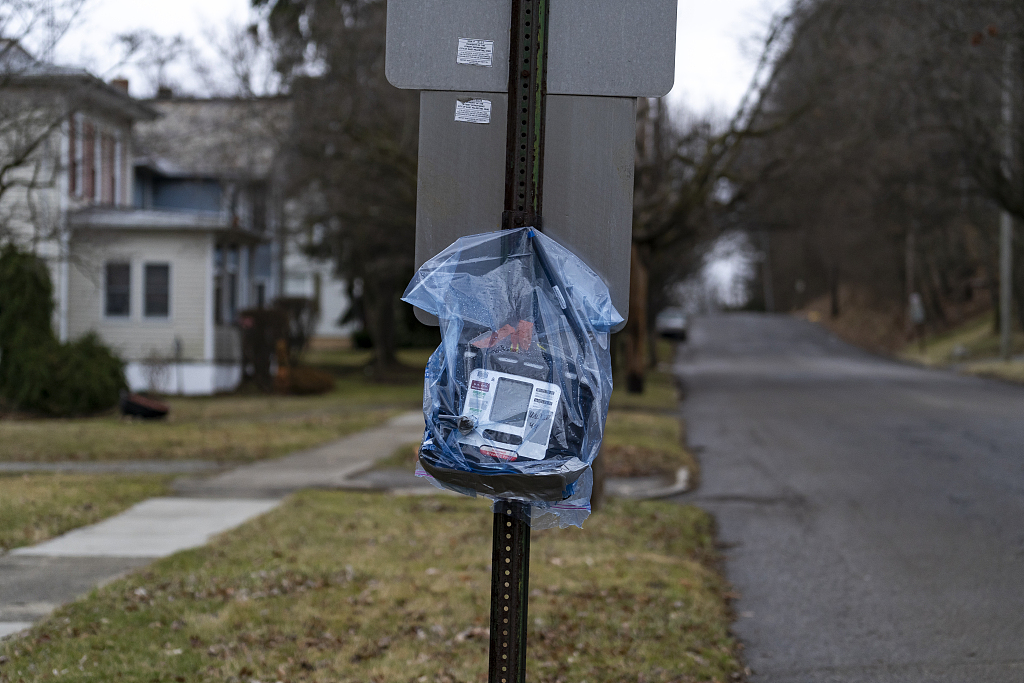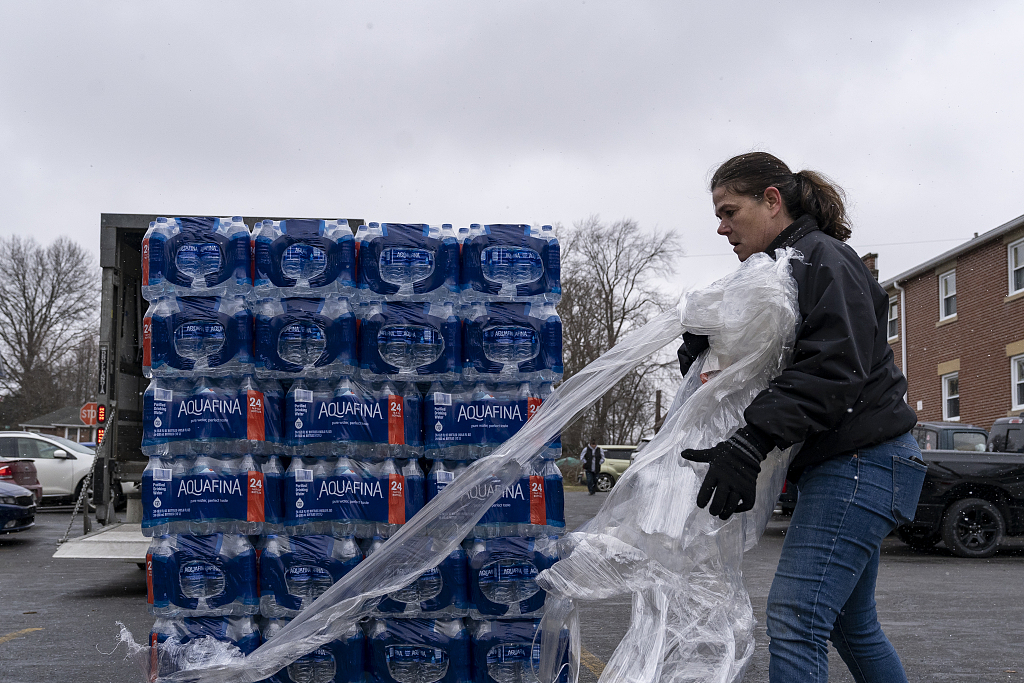It's been over two weeks that the train carrying hazardous chemicals derailed in the U.S. town of East Palestine, Ohio, triggering a storm of criticism and speculation on social media.
The most concerning chemical, vinyl chloride, was burned by crew members as the railroad and state authorities claimed it was to avoid a larger explosion.
Here's what you should know about the vinyl chloride carried on the Ohio train:
01:34

A manufactured substance
Vinyl chloride, also called vinyl chloride monomer (VCM), has a sweet odor at high concentrations. It is a colorless gas at room temperature, and in high pressure or at low temperature, vinyl chloride can exist in liquid form.
First produced in 1835, vinyl chloride is now an important industrial chemical primarily used in the production of polyvinyl chloride (PVC), one of the most widely used thermoplastic polymers in the world.
During transportation, the substance is stored as a liquefied gas. Like many other flammable gases and chemicals, it's crucial to be extremely careful in storing and transporting VCM. A similar accident happened in Germany in June 1996, when 10 of 18 tank wagons filled with vinyl chloride went off the tracks, which caused one wagon to explode and four others to catch fire.

An air quality monitor hangs on a stop sign in East Palestine, Ohio, February 17, 2023. /CFP
An air quality monitor hangs on a stop sign in East Palestine, Ohio, February 17, 2023. /CFP
It's hazardous
It is classified as an International Agency for Research on Cancer (IARC) Group 1 carcinogen. People exposed to high levels of VCM should immediately evacuate the area. According to U.S. National Cancer Institute, vinyl chloride exposure is associated with an increased risk of liver, brain and lung cancers, lymphoma and leukemia.
When vinyl chloride is burned, it decomposes to carbon dioxide, carbon monoxide, hydrogen chloride and traces of phosgene. Hydrogen chloride released into the air may form a component of acid rain, while phosgene is highly toxic and was used during World War I as a chemical weapon.
Burning vinyl chloride also has a possibility of forming dioxins - persistent organic pollutants that are also highly toxic and can cause cancer. But so far, the toxic gas hasn't been detected in Ohio's accident.

A volunteer distributes cases of water to residents in East Palestine, Ohio, February 17, 2023. /CFP
A volunteer distributes cases of water to residents in East Palestine, Ohio, February 17, 2023. /CFP
Plastic and environment
Polyvinyl chloride, or its predecessor vinyl chloride, is broadly used in our daily life, such as pipes, electric cables, clothing and food-covering sheets. Ohio's accident isn't the first time that vinyl chloride has polluted the environment and threatened people's health. But it reveals our reliance on plastic and damage to the environment.
Despite vinyl chloride not occurring naturally, it can be formed by microbial degradation of PVC. According to Agency for Toxic Substances and Disease Registry (ATSDR), the vinyl chloride is "unlikely to build up" in food chain, but it can evaporate in the air and form other chemicals, such as hydrochloric acid; or it can migrate to groundwater. And both water and air are essential for all life on the Earth.
(If you want to contribute and have specific expertise, please contact us at nature@cgtn.com.)